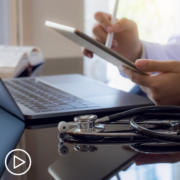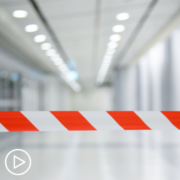How Can CLL Patients Mitigate Distance and Technology Barriers to Care?
How Can CLL Patients Mitigate Distance and Technology Barriers to Care? from Patient Empowerment Network on Vimeo.
How can chronic lymphocytic leukemia (CLL) patients overcome barriers to their CLL care like distance, technology, and other challenges? Dr. Kathy Kim from UC Davis School of Medicine details the challenges she’s witnessed for patients and some ways that both patients and providers can help bridge the gaps to optimal patient care.
See More from Best CLL Care No Matter Where You Live
Related Resources:
Transcript:
Dr. Awan:
So is it going to be financially difficult to let’s say, get an app or download an app, which might have a subscription service, attached to it, so that’s the first question that I might have. And the second question is then, this is something that I run into every day. A lot of my patients are older. Some of my patients live on farms, a couple of hours, three, four hours away from Dallas in a relatively rural area, east or west of us in north Texas, and you know those people may not necessarily have access to broadband, they may not have access to high-speed internet. So, they may not be able to get online, or if they do get online, the connections are not the most perfect, so it’s always, the video is not pretty good, or they frankly, may not know how to operate, they don’t just don’t feel comfortable operating these devices or the tablets or phones, even though they might use them for making calls and texting, but they may not necessarily be very conversing with them or very at ease with them, so are those options really difficult for our patients to use?
Dr. Kim:
Yeah, so you’ve mentioned three really key areas, cost, connectivity, and what I will call digital literacy or digital familiarity, those are really three key areas that we need to address for anyone who wants to use these tools to be able to use them. So, cost is the first thing, most mobile apps are fairly inexpensive, and if you’ve downloaded anything from the Apple Store or the Google Play store, almost everything is free, or a few things might have you know $2.99, $8.99. Some of them do have subscription fees. So, the app itself is probably the least expensive part of it. The more expensive part is, do you have a modern smartphone that can actually, where you can download that up or do you have a modern tablet or a newer laptop that can actually use apps, right? Not just software, but apps, those devices is where the cost really comes in, and you know if you’ve got any kind of device, it’s every couple of years, you have to replace it or upgrade it to kind of keep it up-to-date. So that is definitely a barrier of the cost of the computing device or remote patient monitoring device, and that is where we really need to collaborate in the industry with our hospital systems and our provider systems, with our legislative representatives, with our insurance companies, to provide low-cost access to the devices.
The third thing is connectivity, which is both cost, and it is a cost as well as an accessibility issue, and for most of the uses in healthcare, as you’ve mentioned, we need to be able to do video, we need to be able to connect to the devices for data, and that means we either have to have a cell phone data , a mobile data plan that can run data on your phone or your tablet, or you need a broadband connection in your home, an actual Wi-Fi plan that comes installed. You need one or the other. And again, either of those options are quite expensive, if you do video visits, it can really eat up your bandwidth if you’re on a low band, low bandwidth plan or you’re paying for the minute or by the bit. It can become very expensive, so we have to have a cost-effective plan available to people, and again, there’s lots of policies or proposals, to be submitted both at the state level, and there are federal programs that are actually now subsidizing. So specifically, under COVID, provider organizations can apply to the federal government for special funds to offer telehealth help to patients, so many providers have bought tablets or other remote patient monitoring devices or things like that, that they can give out to patients.
Which brings us to the third thing that you mentioned, which is digital familiarity or digital literacy. We have to help people learn how to use these. So even if you use a cell phone, it’s different using a smartphone, right? The apps are different, the navigation is different, how you touch your screen is different, how these applications actually work, and how to get the data from your own device to a provider, to your doctor is a whole another set of skills, right? Do you have to pair these devices, do you have to register an account and have a password? Do you have to approve your doctor to get access, there’s all these questions about how you would actually do all this and this is where organizations like Patient Empowerment Network, that I know does a lot of effort to help patients more how to use technology, as well as the research that we have been doing at UC Davis in the community about how to support patients overcome all these barriers becomes really critical, we have to actually work together to make sure all three of these issues are addressed so that everybody can have access.







